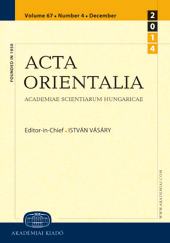A small region in Transdanubia under Ottoman rule: Bonyhád and its surroundings in the 16th century
A small region in Transdanubia under Ottoman rule: Bonyhád and its surroundings in the 16th century
Author(s): Géza DávidSubject(s): Economic history, Local History / Microhistory, Demography and human biology, 16th Century, The Ottoman Empire
Published by: Akadémiai Kiadó
Keywords: Ottoman Hungary; micro-history; historical demography; ecclesiastic history; tahrir defteri studies; mills; fairs and markets; composition of nationalities;
Summary/Abstract: The Ottomans occupied Bonyhád and its surroundings probably during the imperial campaign of 1543. The first survey of the region was made in 1546, followed by three additional ones during the 16th century (1552, 1570 and 1579). The territory under investigation first belonged to the sancak of Mohács, later to that of Pécs. Nearly all studied settlements could be found in all four defters . Thus some 20 places were categorised according to various criteria. It turned out that as far as population, the amount of taxes paid and wine-production are concerned, the market town ( oppidum ) Nádasd was the most significant. Though only a village at the time, Bonyhád also ranked among the first in several respects. The examination of settlements with mills, fairs and markets and of the number of priests yielded new results, modifying in part our knowledge of the Middle Ages.
Journal: Acta Orientalia Academiae Scientiarum Hungaricae
- Issue Year: 61/2008
- Issue No: 1-2
- Page Range: 27-41
- Page Count: 15
- Language: English
- Content File-PDF

